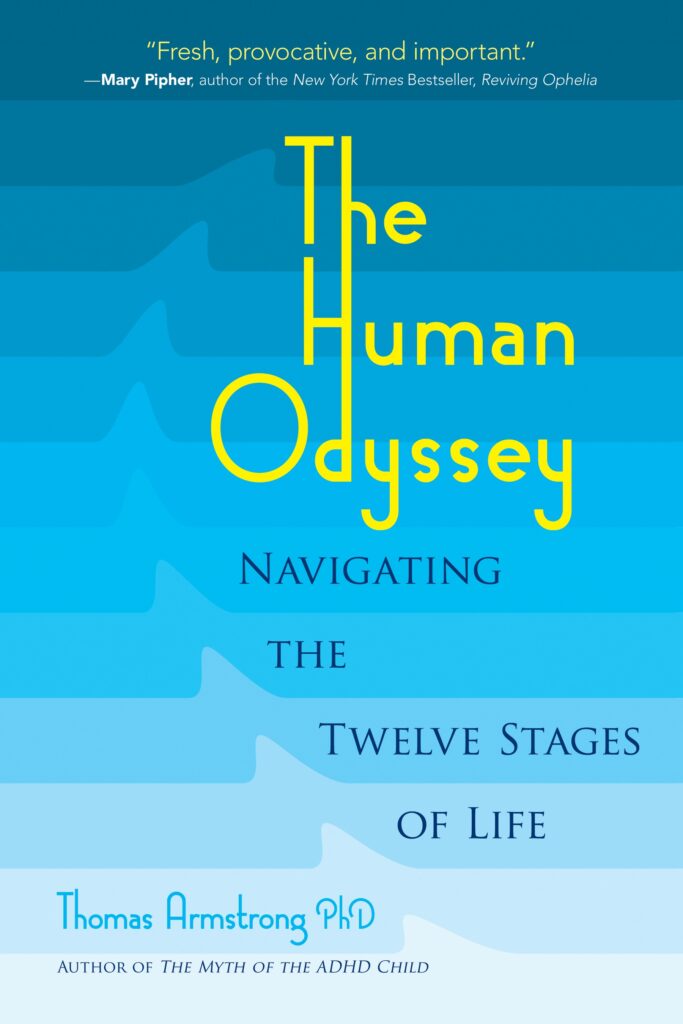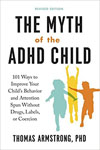
In this video (number 10 in my 12-part video series on The Myth of the ADHD Child), I provide a sociological interpretation of the disorder as a strong counterpoint to the usual depiction of ADHD as a medical disorder with a biochemical basis. I explain how the phenomenon of ADHD emerged over the past several decades as a result of several social forces including:
- the emergence of cognitive psychology in the 1960’s and 70’s,
- the shift from psychoanalytic to biological psychiatry during that same time,
- parent advocacy from groups like CHADD seeking recognition of ADD in the 1980’s,
- widespread media coverage of ADD that began in that decade,
- the efforts of drug companies starting in the 1990’s to expand their market share of ADHD drugs,
- the opening of special education programs to students diagnosed with ADHD in the early 1990’s,
- the government’s allowing direct-to-consumer advertising of ADHD (and other) drugs, and
- the construction of ADHD itself within the meeting rooms of the American Psychiatric Association during the 1980’s and 1990’s.
I also examine the social values that may have led to the creation of the ADHD label, including the impact of the Protestant work ethic, which eschews behaviors related to inability to control impulses, delay gratification, and work efficiently and ambitiously to attain life goals.
Finally, I suggest a new approach when referring to those labelled as having ADHD, pointing out the problems with using the term ”the ADHD child” and even the person-first term ”the child with ADHD. ” Instead I recommend attributions such as ”the child diagnosed with ADHD” and ”the person identified as having ADHD” as more accurate descriptions of a social event that actually occurred: the diagnosing of a child with a disorder called ADHD. I’ve provided a written transcript of the video who prefer to read about it (and have included links related to sources cited).
Transcript of Video
Hi, I’m Dr. Thomas Armstrong. This is part 10 of my 12-part video series on The Myth of the ADHD Child. This video is entitled ‘’ADHD as a Social Construction.’’
Let me preface this presentation by saying that I DO believe that ADHD symptoms exist. But I believe after 50 years of studying this issue, that the hypothesis that there is a specific medical disorder called ADHD causing these symptoms is wrong and there are many other points of view that can account for these symptoms. The videos in this series describe some of these perspectives. In this video, I look ADHD as a social construction.
In previous videos of my 12-part video series on The Myth of ADHD, I’ve used different paradigms to look at the issue of ADHD. In video 2 I used a developmental perspective. In video 3, a cognitive point of view. In video 4, an educational lens and so on. In this video I use a sociological paradigm to better understand the phenomenon of ADHD. I’ll be looking at the social forces which brought ADHD to such prominence in our time, examining what underlying social values may have been at work prompting the emergence of ADHD, and noting how we can better understand ADHD as a social interaction occurring between several layers of society.
ADHD experts often like to present a ‘’history’’ (quote unquote) of ADHD. When they do this, we see the proliferation of terms that were used leading up to the time when we began to refer to ADHD. One thing that’s often neglected by the ADHD community, however, is that each term had a different social context within which the term emerged. ‘’Defective moral control’’ for example, came out of a context when behavior problems were viewed within a ‘’moral’’ or ‘’ethical’’ lens, as if the children were guilty of breaking some external moral code. The term ‘’postencephalitic behavior disorder,’’ emerged out of the encephalitis pandemic which struck the world from 1917 to 1928. The term ‘’minimal brain damage’’ unleashed a flurry of criticism questioning where the brain damage was in these kids, which led to a milder version ‘’minimal brain dysfunction’’ replacing it.
Then, beginning in 1968, a medical organization (that is, a social institution) got involved in defining this term, initially calling it hyperkinetic reaction of childhood in the DSM III, and then over the subsequent twenty years, naming it attention deficit disorder, and then attention deficit hyperactivity disorder, which is remains today. Just as an aside, I think people should proceed with caution whenever a disorder changes its words around every few years.
DSM refers to the Diagnostic and Statistical Manual and is the bible of The American Psychiatric Association. The disorders within its different versions are determined not through lab tests but through committee meetings – in other words through social organizations interacting and attempting to gain consensus. This may help explain why the definitions keep changing from one DSM version to another, and why the number of children, teens, and adults encompassed within their definition of ADHD, keeps growing even through the current version — DSM 5. This is one of the reasons that I suggest that ADHD is a social construction – that it has literally been constructed by groups of psychiatrists gathered in real meeting rooms under the auspices of the American Psychiatric Association. It should be noted that there is another diagnostic system created by the World Health Association which has compiled its own ICD or International Classification of Diseases, and its views of the incidence and criteria for ADHD differ, sometimes significantly, from that of the DSM.
Next, I want to look at the phenomenon of ADHD as it emerged within the social landscape of American culture over the past sixty years. Beginning in the 1960’s, I’m going to take you through a timeline, decade by decade, to look at what were some of the significant events that led to ADHD becoming the most common mental disorder among children and teens in the US.
ADHD began very quietly against the backdrop of a culture that saw these kids as ‘’hyperactive’’ in the 1950’s and 1960’s. In 1971, the psychologist Virginia Douglas gave a speech to the Canadian Psychological Association suggesting that ‘’attention’’ which up to that point was seen as only one aspect of the broader term ‘’hyperactivity,’’ was really at the heart of the matter as far as this disorder was concerned. Just at the point she gave this speech, American psychology was undergoing a transition from a behaviorist point of view (where the behavior of hyperactivity was seen as primary) to a cognitive perspective. In the 1960’s, figures such as Harvard psychologists George Miller and Jerome Bruner, were doing research in cognitive processes like memory, problem-solving, and perception. So, ADHD was like a seed placed in the ground at a time when researchers were keen to investigate cognitive processes that included, significantly, attention. Consequently, research laboratories began writing grants to do work in the field of attention, and, of course, where there’s attention, there are sure to be attention deficits.
Another significant transformation was also taking place in the field of psychiatry. In the 1940’s and 1950’s, psychiatry was dominated by Freudian psychoanalysis. A patient coming in for therapy was likely to have been diagnosed with an Oedipal complex or a fixation on other incestual fantasies. In the 1960’s, however, the tide was turning toward a psychobiological paradigm as being at the core of psychiatric illness. Psychiatrists began to turn toward the brain as a focus of research, and to the use of drugs rather than psychoanalysis, as a method of treating their patients. In this way, the seed was planted for a biological view of mental illness and pharmaceutical remedies to treat it. This became a bedrock of the ADHD field – that ADHD is a biochemical or genetic disorder that should be primarily treated through medications.
In the 1980’s, ADHD raised its head, so to speak, from the cognitive laboratories and psychiatric offices of America and became a public issue. Parents began advocating for their children around what was then called Attention Deficit Disorder, and in 1987, the first nationwide parent group was formed, Children with Attention Deficit Disorder or CHADD (later changed to Children and Adults with Attention Deficit Disorder). Parent groups began to lobby Congress to have ADD certified as a handicapping condition requiring schools to provide these kids with special services.
ADD became a hot topic in women’s magazines, on talk shows like Oprah and Donahue, and even in news reports on television and radio. Also significantly, in 1985, Congress began to allow drugs to be advertised direct-to-consumer through TV ads, ads in parenting magazines, and elsewhere, which triggered a demand by parents to have their children’s doctors see their kids, diagnose them as ADD, and have them treated with drugs. ADHD going public was a huge influence in ADHD becoming an integral part of the social landscape of America over subsequent years.
The parent advocacy group CHADD’s efforts to have Congress legislate attention deficit disorder as a handicapping condition eligible for special education in the schools was doomed to failure. Congress voted this proposal down, partly because of legislators’ and lobbyists’ concerns regarding the labeling of minority youth. However, in 1991, a letter from the Department of Education was quietly circulated to the superintendents of education of each of the 50 states explaining how ADD could become an eligible handicapping condition through existing laws such as Section 504 of the Rehabilitation Act, and the ‘’other health impaired’’ clause of the Education of All Handicapped Children Act of 1975.
That letter opened the floodgates for new groups of children to be eligible for services in special education programs. Now teachers could pressure parents to have their kids seen by a doctor who could diagnose them with ADD and make it possible for them to receive special services. This also meant that a whole new growth industry emerged for new teachers, trainings, tests, and materials.
As the numbers of kids diagnosed with ADHD increased, doctors were being wooed by the representatives of large drug companies to prescribe their latest products. Adderall, now the leading drug used to treat ADHD, was introduced in 1996, and in 2001 Adderall XL a slow-release version of the drug became available.
Drug companies advertised in physicians’ professional journals, held lavish workshops for them where they minimized the side effects of their drugs, recruited and paid ADHD experts to sing the praises of their drugs (even going so far as to subsidize their so-called independent research on ADHD), and initiated elaborate publicity campaigns for parents and patients involving videos, quizzes, comic books, and other ploys to expand their market share. According to New York Times reporter Alan Schwartz, the Food and Drug Administration has cited every single major ADHD medication for false and misleading advertising. And yet the push went on.
Meanwhile, the numbers of children, teens, and adults diagnosed with ADHD, began to skyrocket during the 2000’s and 2010s. In 2010, diagnoses were five times greater than what they were in 1999.
By 2022, ADHD had been diagnosed in almost 10% of all kids sometime during their lifetime, and 5 million children and teens are currently diagnosed with ADHD with 62% of all these kids taking ADHD drugs to treat their condition. What began as a suggestion in a speech by Virginia Douglas in 1971 and was fed over the decades by cognitive psychology laboratories, new psychiatric theories, parent advocacy, media attention, and access to new school populations, has now become a behemoth running out of control.
This massive expansion did not occur, as ADHD experts suggest, because ADHD was just waiting there all along (like a hidden virus) to be discovered. This growth of ADHD diagnoses was a direct result of specific research priorities, parental politics, media advocacy, school bureaucracy decisions, drug company collusion, and other social pressures. This is another reason why, quite apart from the symptoms themselves, I believe that ADHD is a social construction.
I’ve already alluded to drug company efforts to expand their markets, but I just want to elaborate a little further on the economic pressures that exist to propel the ADHD construct forward in our culture. You can see from this chart [slide 16] how ADHD prescription drugs skyrocketed in sales from under $2 billion in 2002 to over $8 billion in 2012.
This graph [slide 17] shows how the ADHD drug market will continue to expand beyond 2023 to 2030. Although stimulant drugs will continue to rise slightly, it’s in the non-stimulant drug market (for drugs such as Strattera) where the market will see its greatest gains, with a Compound Annual Growth Rate for all these drugs of almost 4%. The ADHD behemoth shows no signs of slowing down.
In addition to the market for ADHD drugs, there’s also a huge market out there for the accessories of the ADHD diagnostic and treatment process. Number one on the list is probably Keith Conners diagnostic rating scales, which by now have sold in the hundreds of millions.
There are also a huge influx of parent and professional books on ADHD, training programs, equipment like attention monitoring devices, subspecialty practices by psychiatrists and psychologists, and manuals to help guide teachers, paraprofessionals, administrators and others in the management of kids diagnosed with ADHD in their classrooms. A lot of people have too much at stake now to let ADHD dwindle into insignificance.
Now I’d like to reflect a bit on another issue important from a sociological point of view, and that is the social values that lead us to diagnose in the first place.
As social critic Ivan Illich once wrote: ‘’Each civilization defines its own diseases. What is sickness in one might be chromosomal abnormality, crime, holiness, or sin in another.’’
Let me give you an example of this from American history. Before the Civil War, a Louisiana physician named Samuel Cartwright wrote in the New Orleans Journal of Medicine about a new disorder he had discovered. He called it ‘’drapetomania.’’ ‘’Drapeto’’ means ‘’to flee’’ and ‘’mania’’ means ‘’an obsession with.’’ He believed that drapetomania afflicted large numbers of runaway slaves and that with proper diagnosis and treatment, these slaves could learn to live a happy and productive life back on the plantation. Now, of course, we can see this as an example of blatant racism. But then it was considered science. It was white society’s value of this racist ideology that made the runaway slave look like he suffered from a mental disorder.
Similarly, in the first few decades of the 20th century, American psychiatry considered those who did not do well on an I.Q. as mentally disordered. You see the headline here [slide 23] ‘’nearly 15 million school children are defectives.’’ Not defective. Defectives. And if you look at the pie chart on the left, you can see the words that psychiatrists used to describe these ‘’mental defectives.’’ If you scored below the normal range on an I.Q. test you were considered a ‘’moron’’ – that was a diagnostic term used by doctors at the time. Then if you scored a little lower, you were an ‘’imbecile.’’ Finally, at the lowest level, you were an ‘’idiot.’’
These were the terms doctors used then, just as we use terms like ADHD, and ASD today to describe kids who don’t conform to the norm. It’s interesting, and a little frightening to see that the disorders of the 1910’s were the insults of today. Could our current labels become the insults of tomorrow?
I want to give just one more illustration of how social values affect the disorders we give people in our culture. You may not realize it, but for over a hundred years, the American Psychiatric Association regarded homosexuality as a mental disorder. It was only in late 1973 that they ‘’voted’’ to declare homosexuality as no longer a mental illness (keep in mind the issue we talked about earlier about disorders being created—and in this case uncreated — by committees).
It makes you wonder, what sort of social values determine the predominance of attention deficit hyperactivity disorder in our culture? Some social critics have suggested that the Protestant Work ethic may be part of the picture. In his highly esteemed work, The Protestant Ethic and the Spirit of Capitalism, sociologist Max Weber, wrote about how the Protestants valued work, ambition, and delayed gratification, and how these values may have been what created the conditions for the rise of capitalism in our society.
Former president of the American Psychological Association Nicholas Hobbs writes more specifically ‘’according to this doctrine . . . God’s chosen ones are inspired to attain to positions of wealth and power through the rational and efficient use of their time and energy, through their willingness to control distracting impulses, and to delay gratification in the service of productivity, and through their thriftiness and ambition.’’ He suggests that children who lacked these virtues, who couldn’t delay gratification, who didn’t use their time and energy efficiently, who weren’t able to control distracting impulses, would be the ones we’d label as deviant in our society. In other words, the kids we now diagnose with attention deficit hyperactivity disorder.
He goes on to say that ‘’a good case can be made for the position that protection of the community is a primary function of classifying and labeling children who are different or deviant.’’ Think about that. He’s saying that we label kids not because they need help, but because we, as a society, need to protect our own culture from those who would threaten it with their wasteful, distracting, lazy, impulsive behaviors.
Finally, I want to give you something very practical to work with that flows from all that I’ve said in this video.
I’d like you to change the way you refer to kids or adults who have been diagnosed with ADHD. Most of the time, people will talk about ‘’the ADHD child’’ while others prefer the ‘’person first’’ version, saying ‘’the child with ADHD.’’ I believe both of those versions are problematic. In the first case, we presuppose that the child somehow HAS ADHD inside of him or her (where is it? we can’t really say). In the second case, the child WITH ADHD, we see the ADHD sort of trailing along behind them, or like it’s something that’s in their possession like in their rucksack or their pockets.
I recommend the three attributions you see at the bottom of this slide. ‘’The child who was diagnosed with ADHD’’ is much more accurate because it’s more truthful. It acknowledges that there was a social act, the doctor actually diagnosed the child. This event definately occurred. When we say ‘’The ADHD child’’ we don’t know where the ADHD is located inside the child, and when we say ‘’The ADHD child’’ we don’t know where the ADHD is located among their possessions. But we do know for sure that there was this process of diagnosing and being diagnosed, and this, to me, provides the necessary insulation between the child and the label.
I believe that language is critical in how we talk to and about children. The words we use to describe them (either to them directly or to others about them) can have a devastating or an enhancing effect. Personally, I’d just like to label the child as ‘’the child’’ and leave it at that. But if we must bring the issue of ADHD into the picture, then the three versions at the bottom of the slide are my recommendations for a more humanistic and generous way of referring to kids with this diagnosis. In fact, I just thought of something. Why don’t we call it ‘’attention deficit hyperactivity diagnosis disorder?”
For more information on my views about how ADHD is a social construction and other themes of this video series, see my book The Myth of the ADHD Child: 101 Ways to Improve Your Child’s Behavior and Attention Span without Drugs, Labels, or Coercion. It’s available through online stores like Amazon, national chains like Barnes and Noble, and independent bookstores worldwide. It’s also available as an audio recording on Audible. And make sure to watch my other videos in this series on You Tube. See also my book for K-12 educators: ADD/ADHD Alternatives in the Classroom. Thanks so much for watching and listening!
This blog post was brought to you by Thomas Armstrong, Ph.D. and www.institute4learning.com.
Follow me on Twitter: @Dr_Armstrong






















Excellent contribution to the debate.
Thanks for your comment!